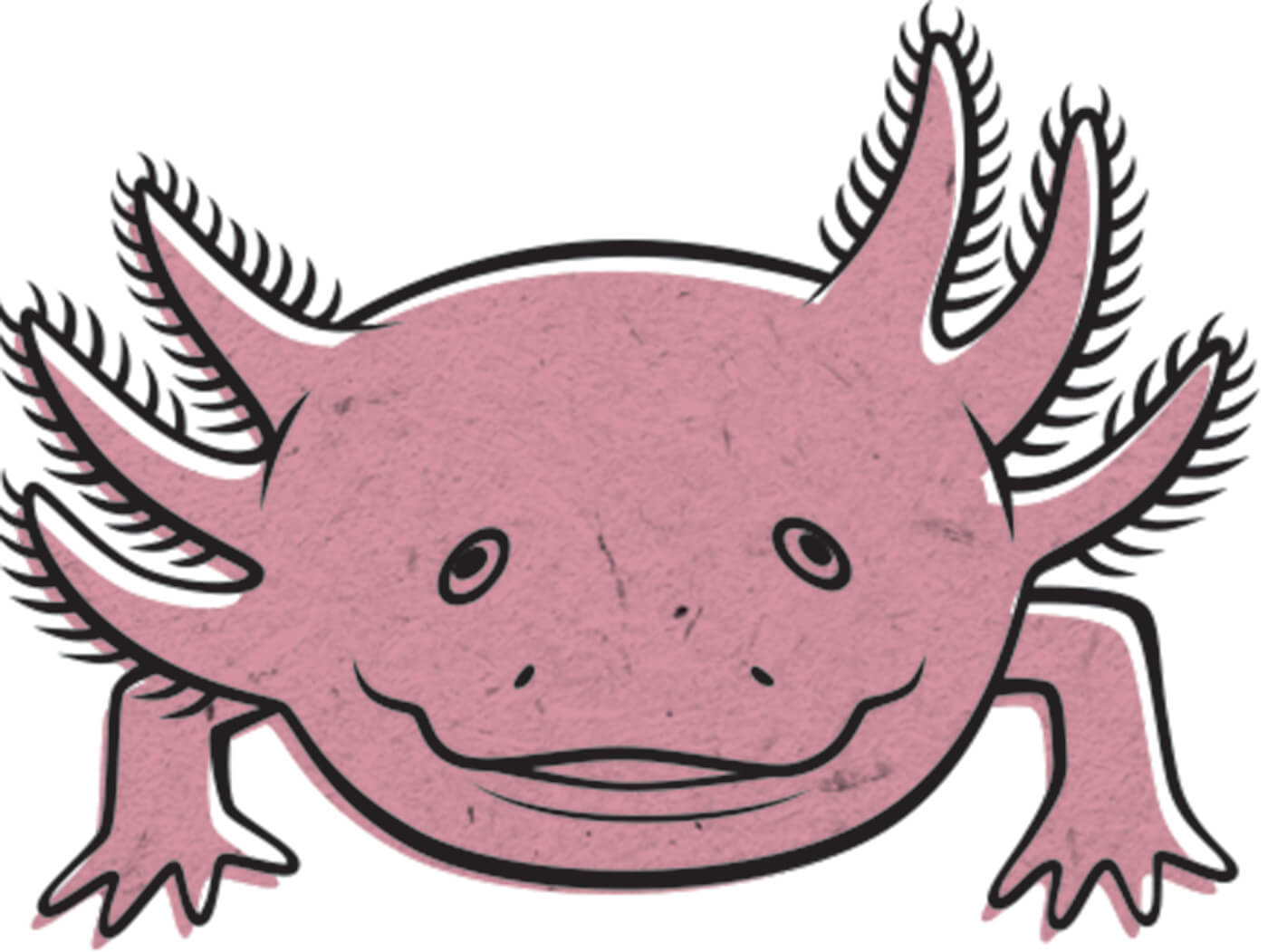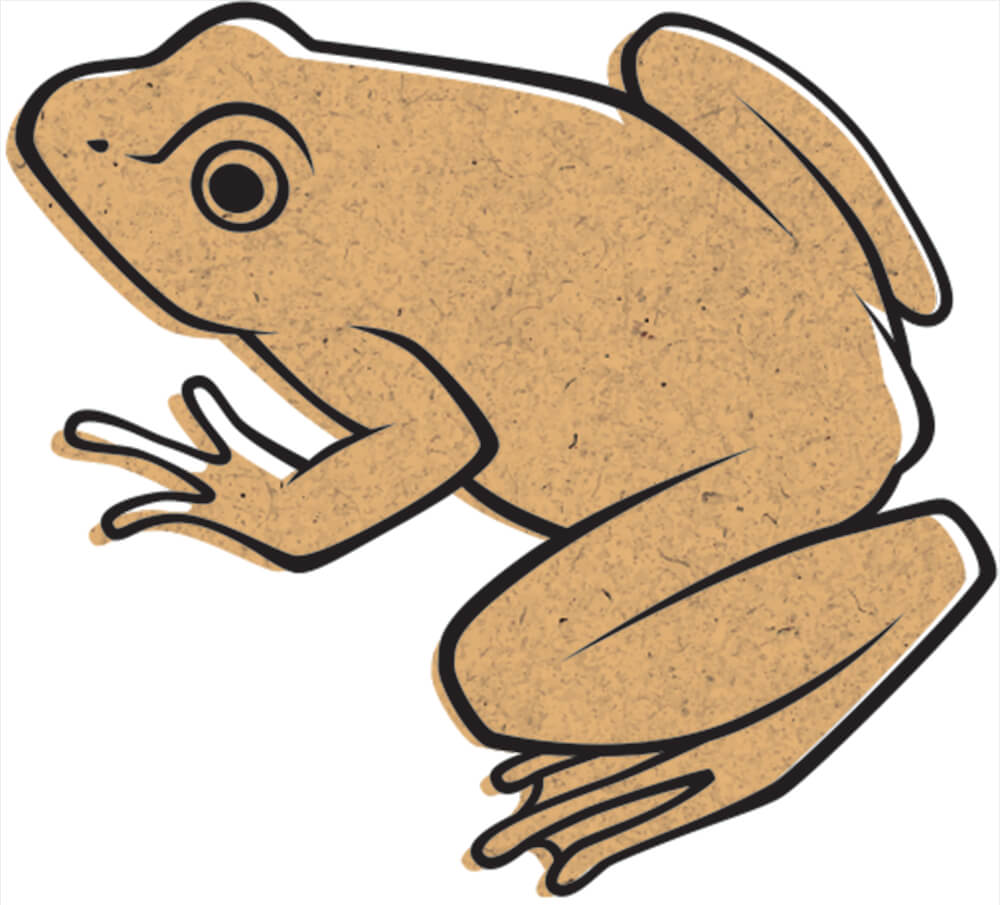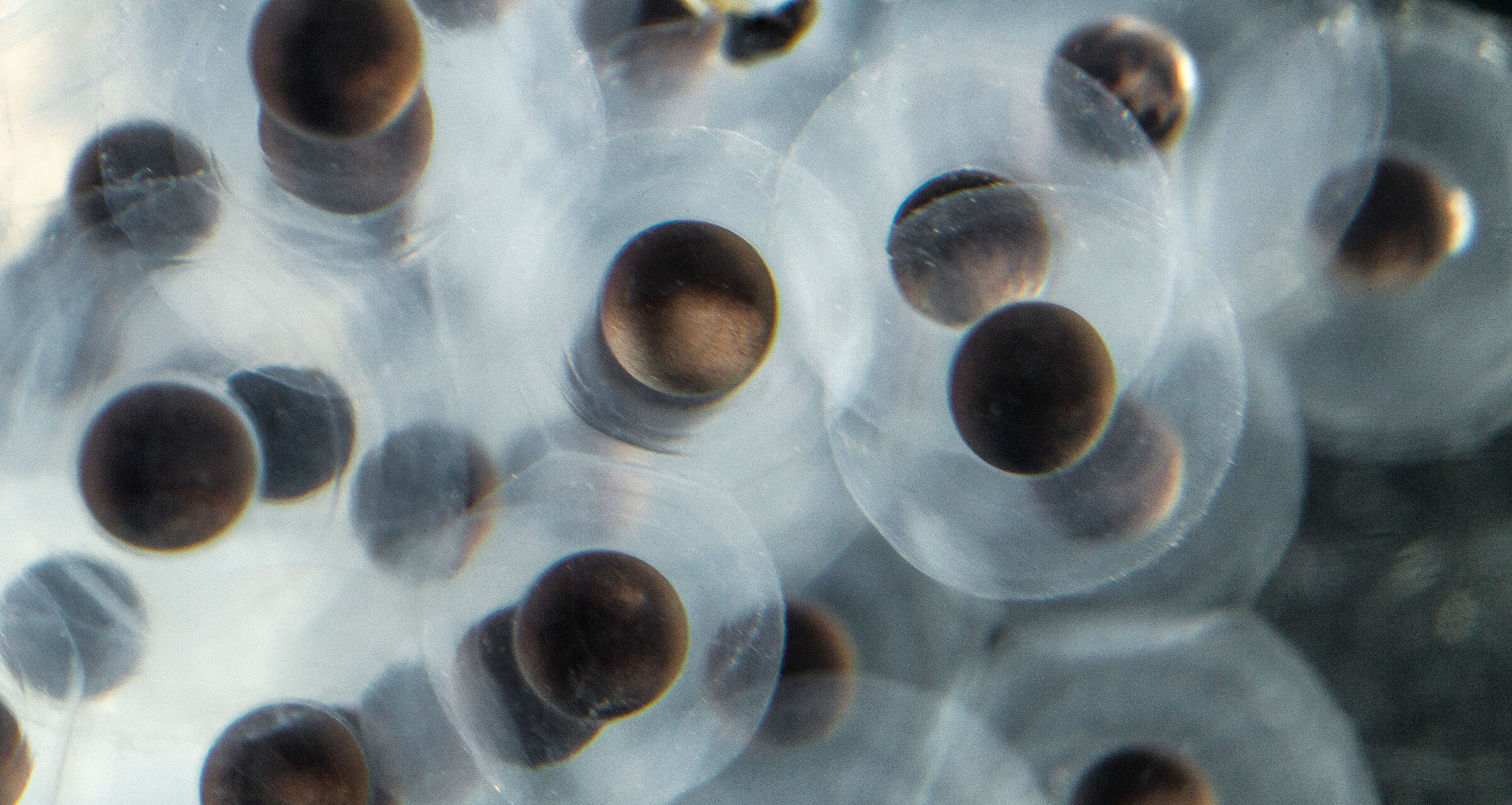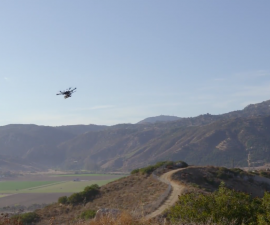With over 6,400 frog species, there is a fascinating diversity within this order of animals—from the famously toxic poison frog to the goliath frog that can grow to the size of a human newborn, to the glass frog with skin so transparent you can watch its heart beat. Many frogs can jump over 20 times their own body length, which is like a human leaping from home plate to first base in a single bound. While frogs have many superpowers, what really sets them apart is the complex and eerily elegant process most frogs undergo on the way to adulthood: metamorphosis.
BY Karyl Carmignani
Illustrations by Allison Brittain

STAGES OF METAMORPHOSIS
1. EGGS: Female frogs lay a clutch of eggs that can number in the thousands, depending upon the species. Males fertilize the eggs externally. After 6 to 21 days, the fertilized eggs hatch in water, and the tiny tadpoles—also called pollywogs—swim about in search of plant matter.

2. HIND LIMBS: Buds form at the base of the tail, then knees and toes emerge. Soon, front limbs develop. The tadpole is still breathing through gills, has a tail, and is aquatic.

3. INTERNAL TRANSITION: The tadpole’s gill structure breaks down, and lungs develop. Soon, the tadpole’s limbs develop, its mouth changes shape in preparation for catching and consuming insects, and its tail is absorbed into the body.

4. CHANGE COMPLETE: While the metamorphosis process may be complete in 46 days, most frogs are not yet adults. They are called metamorphs the first year, juveniles at one to two years, subadults at two to three years, and finally adults at three years and older.

TYPES OF AMPHIBIANS
ANURA: Includes Frogs and Toads
Most but not all species in this group go through dramatic internal and external changes to adulthood.

URODELA; Includes Salamanders and Newts
Resembling a cross between a lizard and a frog, this group consists of around 600 species.

APODA: Includes Caecilians
Pronounced seh-SILL-yens, this group of legless amphibians range in size from 3.5 inches long to nearly 5 feet long.

DID YOU KNOW?
Some amphibians are fully aquatic and skip metamorphosis into adulthood, like the axolotls.

THE EYES HAVE IT
Frogs have keen nighttime vision. The bulging eye design of many frog species allows them to see in front, to the sides, and partially behind them. But what really takes the cake is when a frog swallows food, it blinks, which pulls its eyes down into the roof of its mouth
and pushes the food down its throat!

SAVING LOCAL FROGS
For the past several years, San Diego Zoo Global has been working to save the mountain yellow-legged frog of the San Gabriel Mountains. Researchers have learned a great deal about the species’ hibernation needs and ecology while breeding and releasing them back into their native mountain streams. Conservation work is underway comparing survivorship of released frogs to find the ideal age and size for successful repopulating.





